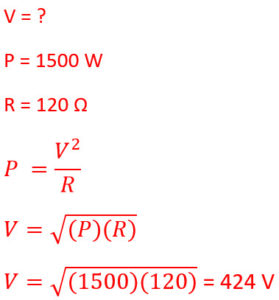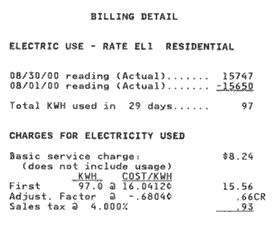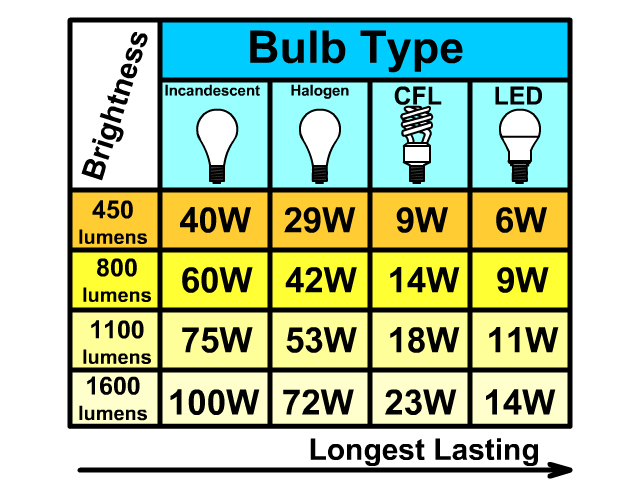Electric Current
Electric Current
Electric Current is a flowing or moving charge. The basic formula seen below describes current as the amount of charge (q) flowing through a point per time (t).
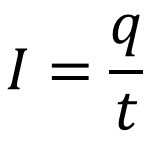
- The variables in this equation are current (I), charge (q), and time (t).
- MKS unit for current is the Ampere (unit A)
- 1 Ampere (1A) of current means one coulomb of charge passes per second
**Note: the dots in the animation go with conventional current and not actual electron flow.
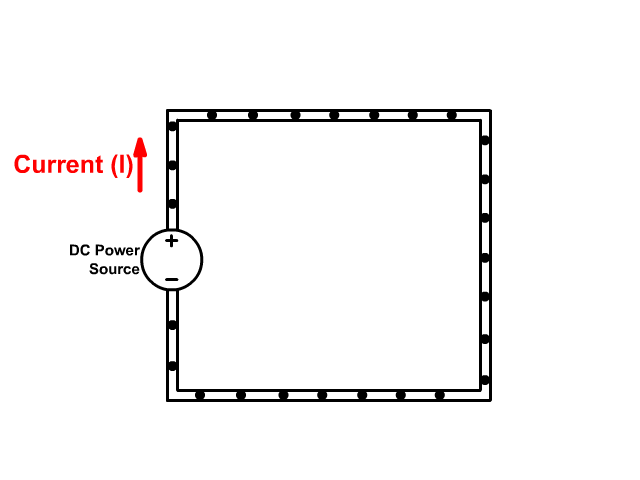
The next equation below relates current to voltage and resistance. V=IR is commonly referred to as Ohm's Law. The equation on the right below is Ohm's Law rearranged for current. This allows you to analyze it better thinking about what would happen to I if V or R went up.
- Voltage is directly related to current. When voltage goes up current goes up.
- Resistance is inversely related to current. When resistance goes up current goes down.
*Follow this link to a previous lesson if you want to see more on how to analyze an equation.
Example Problems
1. How long would it take for a charge of 20 C to flow in the presence of 2 amps of current?
2. How much current would flow in a closed circuit that has a 9V battery and 18Ω total resistance?
Electric Power
Electric power is the product of current and voltage. The higher the voltage the greater the power produced by a current.
The following equations relate power to current, voltage, resistance, time, and energy.
Try the following problems getting practice writing out a givens list, picking the equation, and solving current and power problems.
Example Problems
3. How much power is present when current of 8 amps flows in a circuit that has a resistance of 100 Ω?
4. What is the potential difference in a circuit that has 1500 Watts of power and a resistance of 120 Ohms?
Cost Per Kilowatt Hour
Power bills in the United States are billed in cost per kilowatt hour. Take a look at your power bill for the actual cost per kilowatt hour. We will use 16.0412 cents per kilowatt hour in our examples which is the price found on the bill in the picture.
Use the equation below to solve for the cost of running any device.
Cost = Power in kilowatts x time in hours x Cost Per kilowatt hours
Before using it you must be sure that power is in kilowatts and time is in hours. You must convert before using this is power or time is in any other unit.
Whatever cost you are quoted in dollars or cents will be the unit of cost in the answer. In the bill here it is cents per kilowatt hour.
Calculating Your Power Bill
You can find an appliance energy calculator at energy.gov which can be used to estimate cost in your state and find the common wattage of many household devices. The knowledge about appliance energy makes you a better citizen. With this knowledge you can help the environment and save money on your monthly bill.
(Link to energy.gov energy calculator)
Here are a few common devices and their power. Follow the link above to see more.
Power of Common Electrical Devices
Here are some common devices found in your home to use in the following example problems. Note that today's devices vary greatly and the numbers below are within a common range.
| Common Devices | Power |
| Air Conditioner (10,000 BTU) | 3000 Watts |
| Microwave | 1300 Watts |
| Computer | 750 Watts |
| Coffee Maker | 600 Watts |
| Refrigerator | 225 Watts |
| LCD TV (Common 40”) | 150 Watts |
| Cell Phone Charger (In Use) | 2 to 6 watts |
| Cell Phone Charger (Not In Use) | 0.1 to 0.5 watts |
Brightness of Bulbs and Power Consumption
- One way to save money on your power bill is to change old fashion incandescent light bulbs to an alternative. Incandescent bulbs produce light by heating up a filament. This creates light but also heat, an unwanted form of energy. The hotter a light gets the less energy efficient it is. Alternatives like LED create light a different more efficient way. While the more efficient light bulbs cost more, they have longer lives and cost less for the same lumens of light. Running a LED to get 1600 lumens of light output only takes 14 watts of power compared to 100 watts for an incandescent bulb. You can power seven 1600 lumen LED bulbs for the same power as one standard 1600 lumen incandescent bulb.
Example Problems
5. What is the price of running a 750 watt computer for 10 hours with a utility bill cost of 16.0412 cents per kilowatt hour?
6. Calculate the cost of running an air conditioner, coffee maker, and refrigerator for three hours at a cost of16.0412 cents per kilowatt hour? (Use the table above to determine power use per device)
Making Energy Efficient Purchases
Click on the picture to see a larger Energy Guide. A common Energy Guide would have the following:
- kWh Usage
- Yearly Estimated Cost
- Common Range for a Similar Device
This helps you make smart purchases for your wallet and the environment.
Learn more about the Energy Guide by following this link to the Energystar.gov website.
Links
- Continue to Series Circuits
- Back to the Main Current and Circuits Page
- Back to the Stickman Physics Home Page
- Equation Sheet





